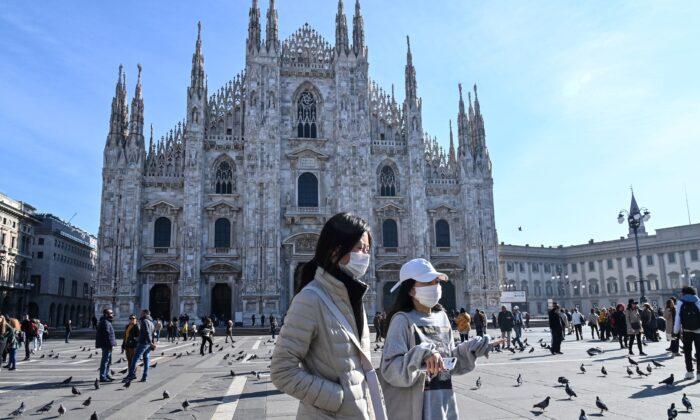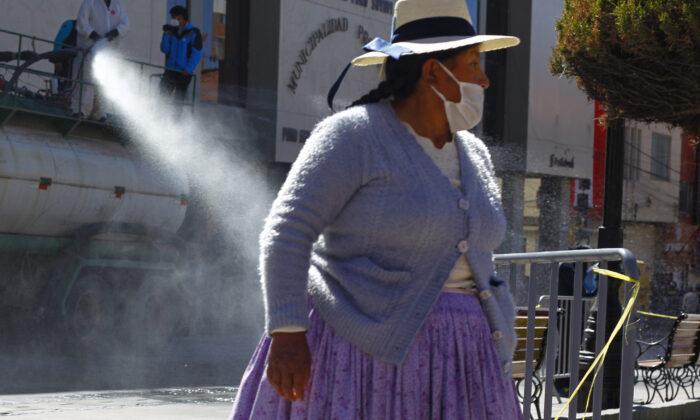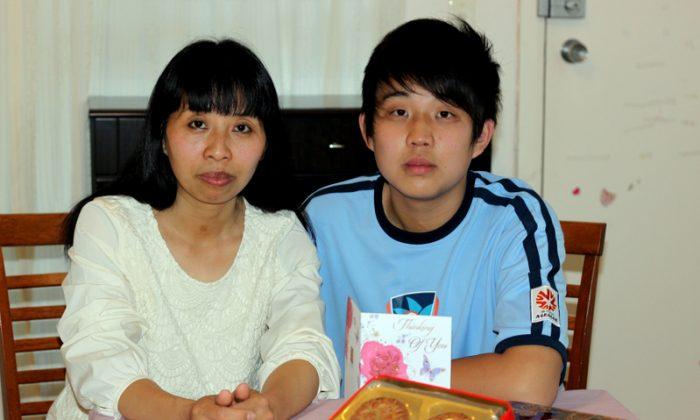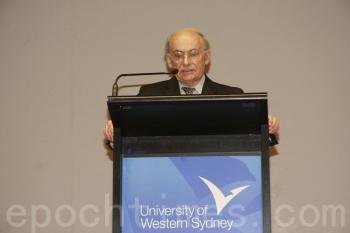This article would like to stress the consequence of forming an alliance with the Chinese Communist Party (CCP).
In March 2019, Italy became the only European country to join China’s Belt and Road Initiative (BRI, also known as Belt and Road). Being the first Group of Seven (G-7) country to join the BRI, Italy hoped it would boost its sluggish economy by establishing a strategic partnership with China.
A Chinese Couple Spreads the Virus
On March 23, China’s state-run media reported that Italy’s first two confirmed virus patients were an elderly Chinese couple. They both recovered after being hospitalized for 49 days. The wife, Hu Yamin, is a faculty member of Central China Normal University, which is located in Wuhan.According to Italian newspaper Il Messaggero, the couple left Wuhan on Jan. 22—a day before the city was locked down—and arrived in Milan the next day. A few days later, the couple developed a fever and cough. On Jan. 30, their conditions deteriorated. Then the couple was hospitalized and tested positive for the CCP virus, commonly known as the novel coronavirus.
The media report had caused widespread disturbance on Chinese social media. Netizens responded with the following comment: “Spread the virus thousands of miles away, indeed.”
CCP Blames Italy for the Pandemic
While the Chinese regime was being criticized unanimously by world leaders for its delayed response and concealment of the severity of the outbreak, China’s Foreign Affairs spokesperson, Zhao Lijian, issued a series of tweets on March 12 blaming the United States for the virus. However, China’s ambassador to the United States, Cui Tiankai, referred to the statement that “the virus originated in the U.S. military laboratory” as “crazy rumors.” When asked again about Zhao’s claim on March 22, Cui said, “That was my position then, and that’s my position now.”Italy quickly became the target of China’s conspiracy theory. China’s state-run mouthpiece China Global Television Network (CGTN) published an article on March 22 that claimed the origin of the Wuhan coronavirus (COVID-19) remains unknown but that Italy might be its birthplace. Statements made by Italian doctor Giuseppe Remuzzi were taken out of context in the article.
In fact, concurrent with spokesperson Zhao’s tweet, CGTN’s report on March 12 also implied the virus came from Europe by distorting the statement of Massimo Galli, head of the university research group and of the infectious-diseases department at Milan’s Sacco hospital.
Remuzzi refuted that Beijing’s attempts to twist his words to suggest the novel coronavirus originated in Italy is a textbook example of “propaganda.”
The Hard-hit Northern Region
As of April 29, there were a total of 75,134 confirmed cases and more than 13,679 deaths from the CCP virus infection in Italy’s Lombardy region.Lombardy welcomed Chinese business in the past.
China’s Minister of Science and Technology, Wang Zhigang, visited Bergamo for the 9th Italy-China Science, Technology and Innovation Week in early December 2018. He also visited the Kilometro Rosso Science and Technology Park, located along the A4 motorway at the gates of Bergam—the area hosts research companies and industry leaders, such as Brembo, a company known for its braking systems.
According to Chinese state media, 19 cooperation agreements in trade and research were signed between Italy and China during the opening day of the China-Italy Science, Technology, and Innovation Week.
Wang said that “Italy is a strategic partner,” and “...we will keep working together on pilot projects in many sectors, from aerospace to intelligent manufacturing. Particular attention will be paid to sustainable energies.”
The mayor of Brescia, Emilio Del Bono, met with the president of the Chinese Association in Brescia in the city hall on Feb. 17. At the meeting, the mayor expressed his solidarity with the Chinese community: “To our fellow citizens I say that there is no danger or risk of contracting the epidemic by visiting restaurants or shops run by Chinese people.”
However, as of April 29, there were more than 12,000 confirmed cases of CCP virus infections in Brescia, only second to the hardest-hit Milan.
Piacenza is also one of the hardest-hit regions in northern Italy. On July 9, 2018, the mayor of Piacenza, Patrizia Barbieri, welcomed a Chinese delegation from Jiangbei District of Ningbo city. Piacenza and Jiangbei signed a sister agreement to promote economic and cultural ties.
Virus Infection Rate Plateaus
In early April, the CCP virus infection rate in Italy started to plateau. Different opinions and voices were heard about the phenomenon.The most influential media in Italy, Corriere della Sera, commented on April 26: “Too many ambiguities about China … the M5S looks favorably on Beijing despite doubts about its responsibilities spreading around the world. Government allies will have to clarify their positions.” The M5S, Five Star Movement, is a political party in Italy.
On April 29, Paolo Grimoldi, deputy of the League and secretary of the Lombard League Salvini Premier, announced that Lombardy will ask China for 20 billion euros for damages caused by the CCP virus. Members of the political party Forza Italia asked the president of the northeastern region of Veneto to do the same.
It is worth noting that since these Italian politicians issued the appeal, the number of infections and deaths across Italy had significantly dropped.
Only when the Italian people jointly denounce and blame the Chinese Communist regime for the losses brought to Italy can they ensure a bright future for their country.



